
Key Points
- Equal Weighted S&P 500 is Losing Momentum vs Cap Weighted
- Increasing New Lows on the NYSE
- S&P 500 Breadth Shows Further Signs of Weakening
- Small Cap Breadth is Holding Up Better
- Breadth Trends Did Not Confirm Recent Index Highs
Chart in Focus:
In the notes below we highlight the fact that breadth has been weakening over the past week despite the S&P 500 trading near record levels. This dynamic can also be seen when looking at the S&P 500 Equal Weighted Index relative to the S&P 500. The fact that the ratio is having trouble breaking above resistance at the 2012 lows tells us that leadership may be starting to concentrate in the largest names in the S&P 500. At the same time, the 14-day RSI has been making lower highs, confirmation that upside momentum for the ratio is waning.
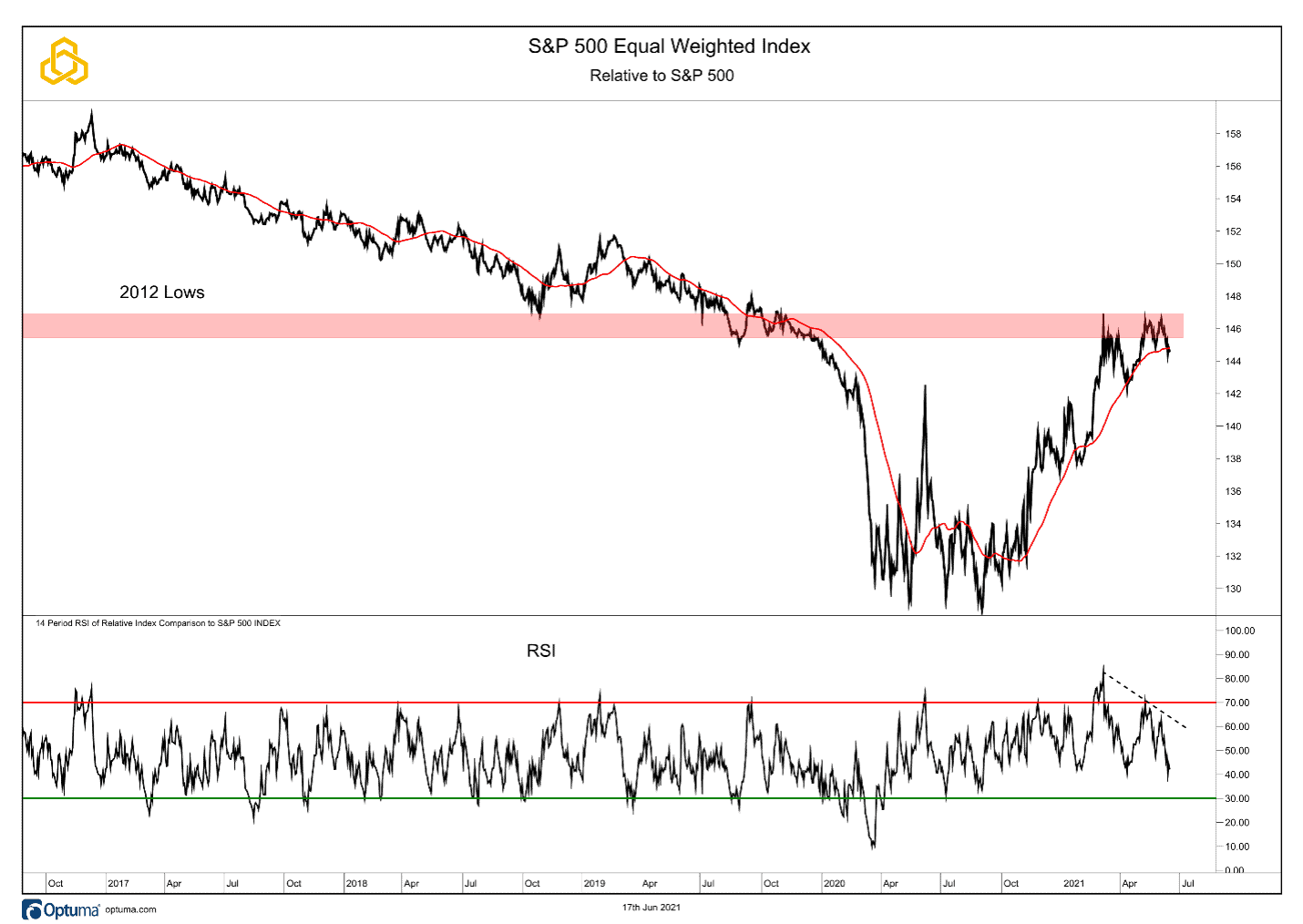
NYSE Breadth
After making a new high on June 11th, the Advance/Decline Line for the NYSE has pulled back this week with equity prices. The rising 50-day moving average has been support for this indicator since it broke out in November and will be a key level to watch should breadth weaken further in the days ahead. At the same time, the S&P 500 is trading just above its own 50-day moving average, also a level that we are watching closely.
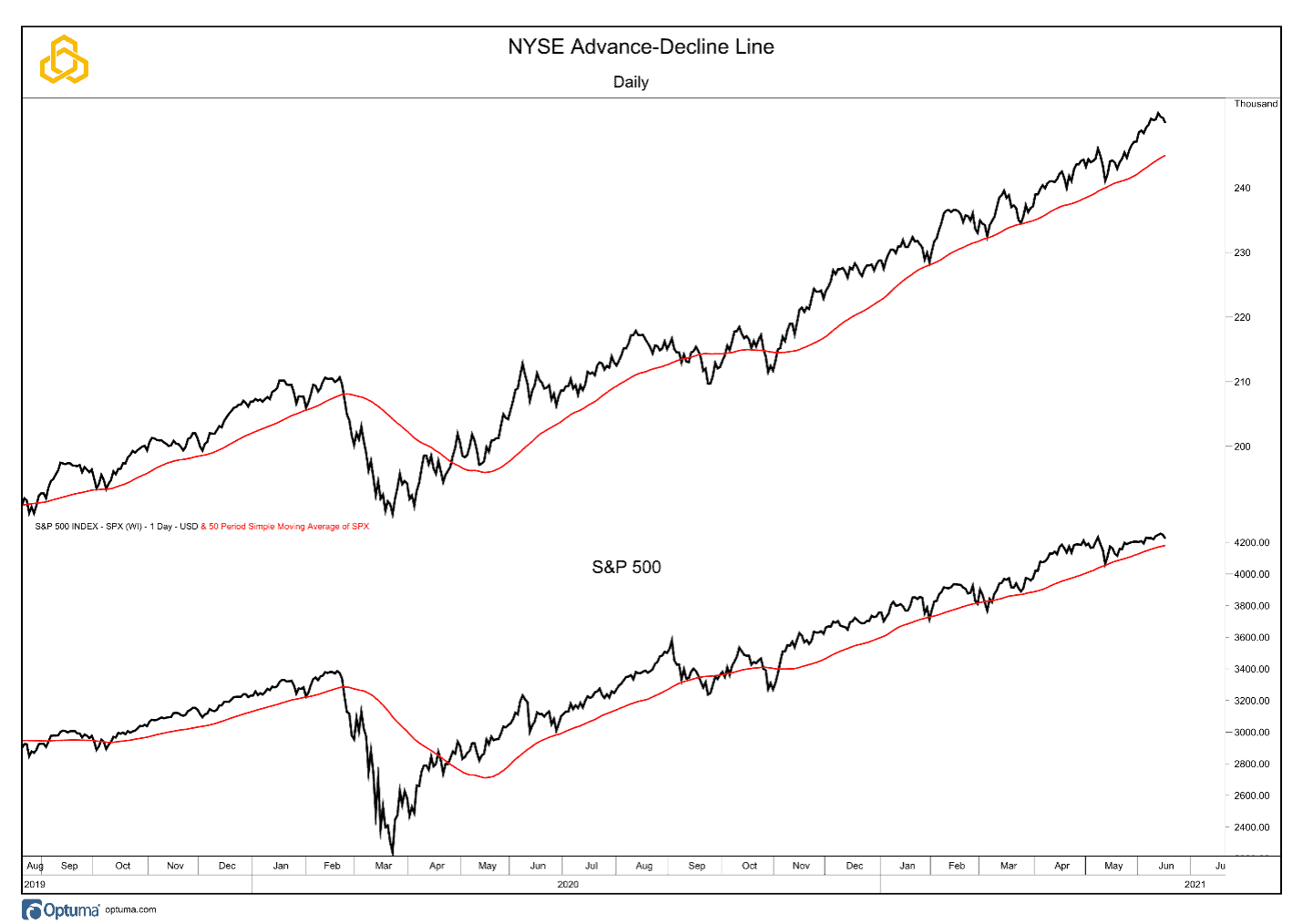
The NYSE’s Advancing – Declining Volume indicator is also rolling over from record levels that were reached late last week. This metric has room to the rising 50-day moving average, a break of which could signal a pause in the uptrend for the S&P 500.
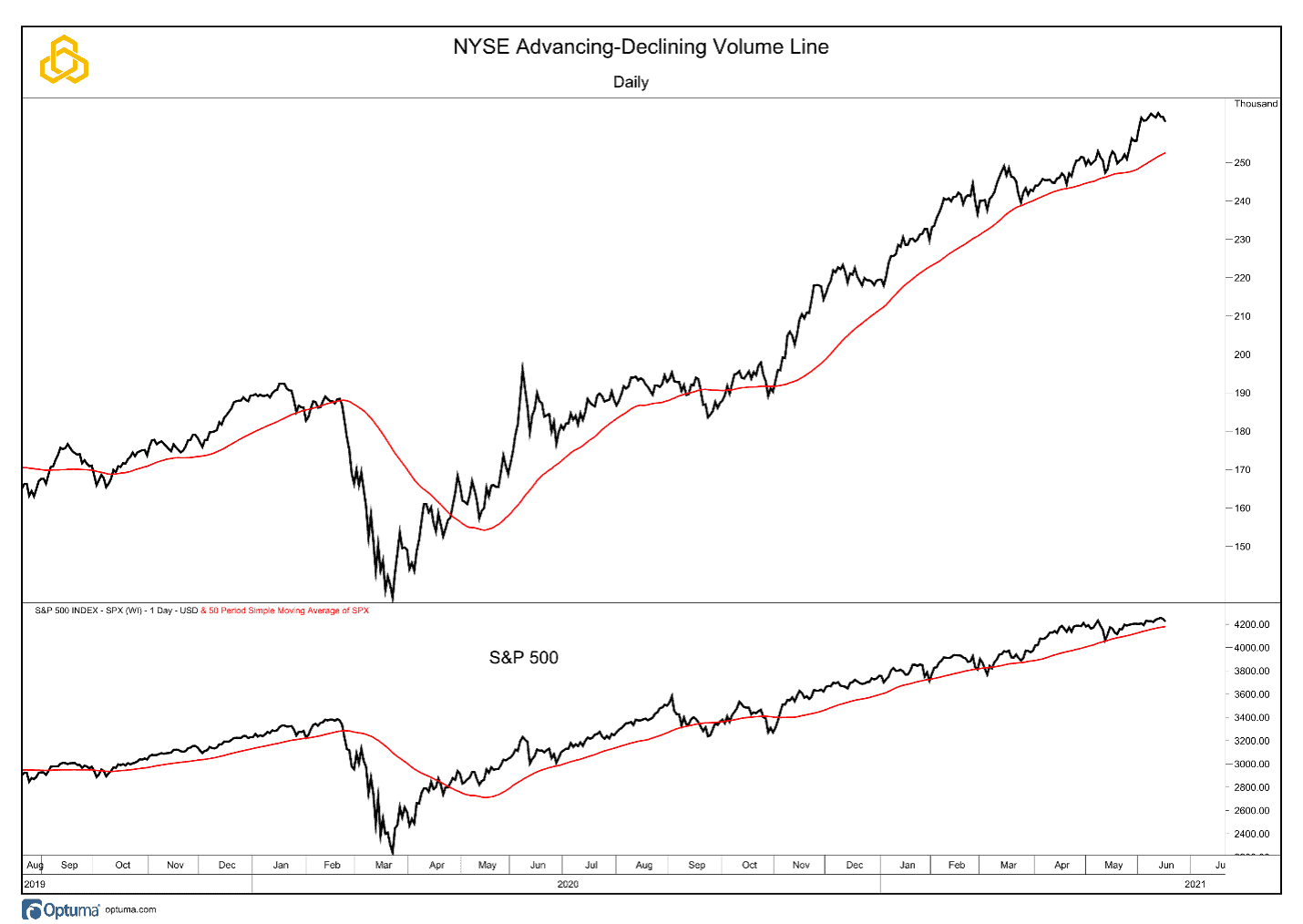
The percentage of stocks on the NYSE which are making new 52-week lows has seen a slight increase week over week. The same can be said for the percentage of stocks making new six-month lows. This is a development which should be watched closely. An absence of an increase in these metrics has been a key point in maintaining a bullish stance on equity prices.
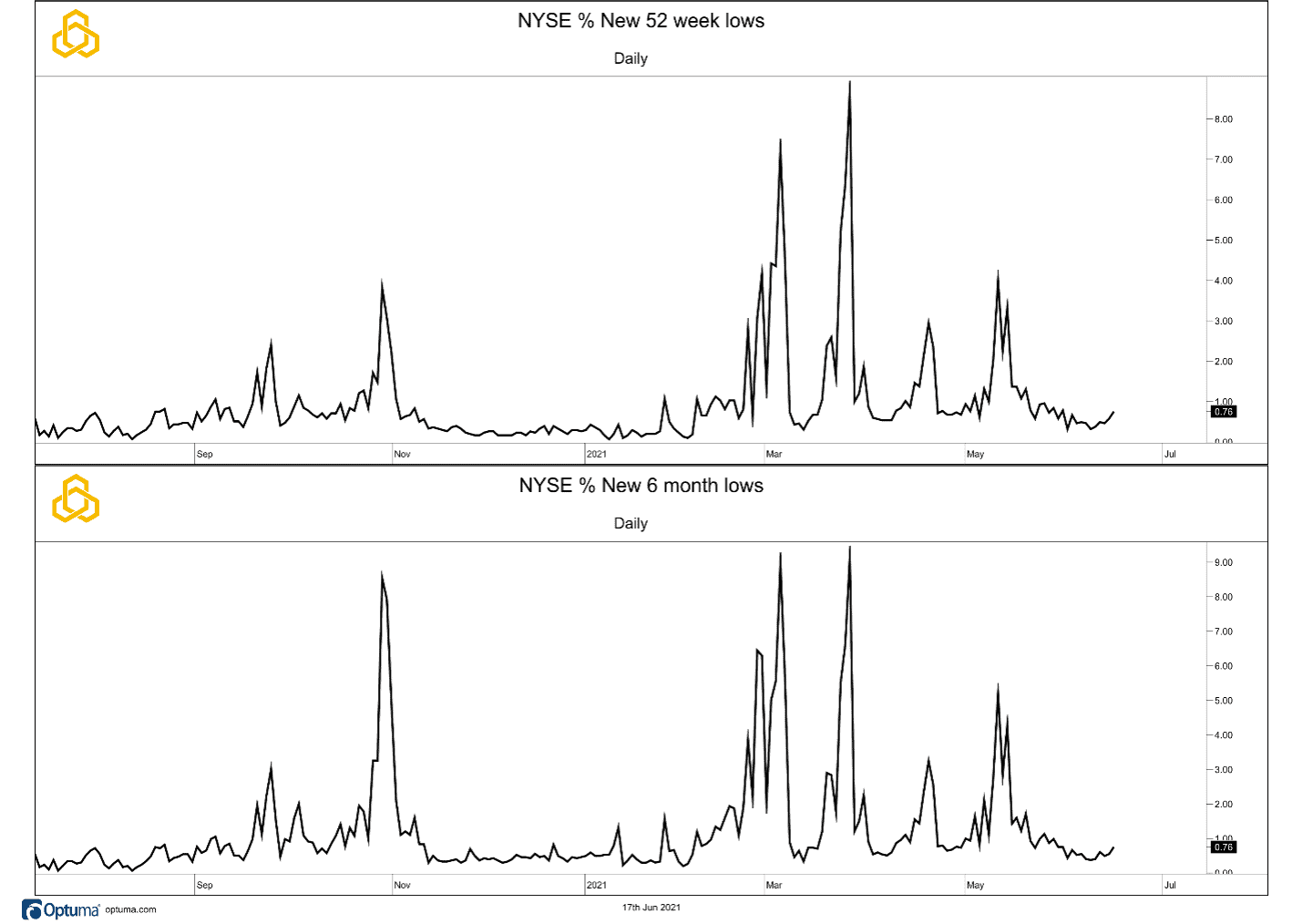
The percentage of issues on the NYSE that are trading above their respective 200-day moving averages remains above the 60% mark but has been making a series of lower highs since the start of the year. When the S&P 500 traded to record levels recently, this metric did not confirm. A break of support would signal further deterioration in the breadth.
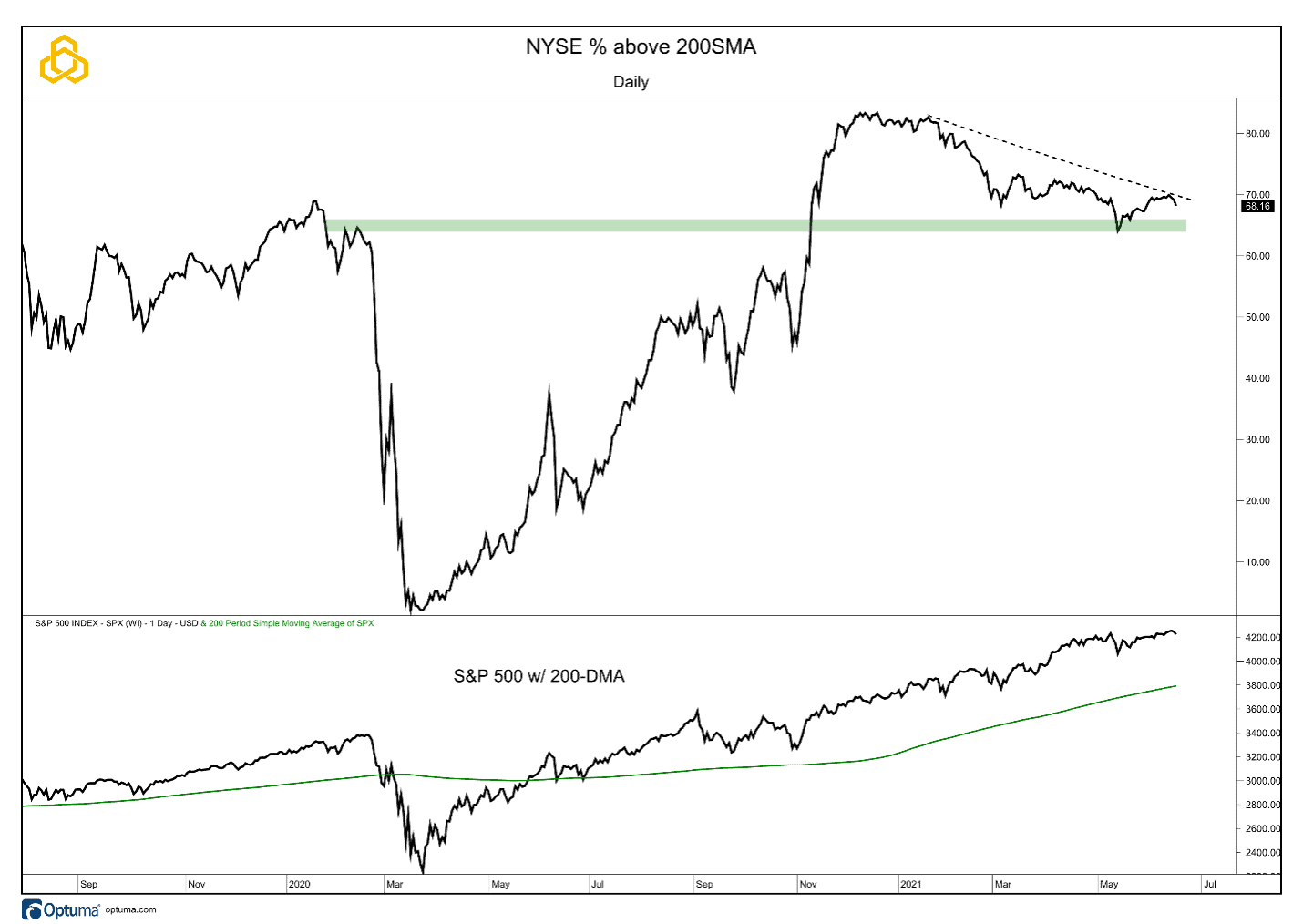
As the S&P 500 nears its 50-day moving average, the percentage of stocks on the NYSE which are trading above their respective 50-day moving averages has begun to roll over as well. The metric remains above 60% for now, but near-term support is being tested.
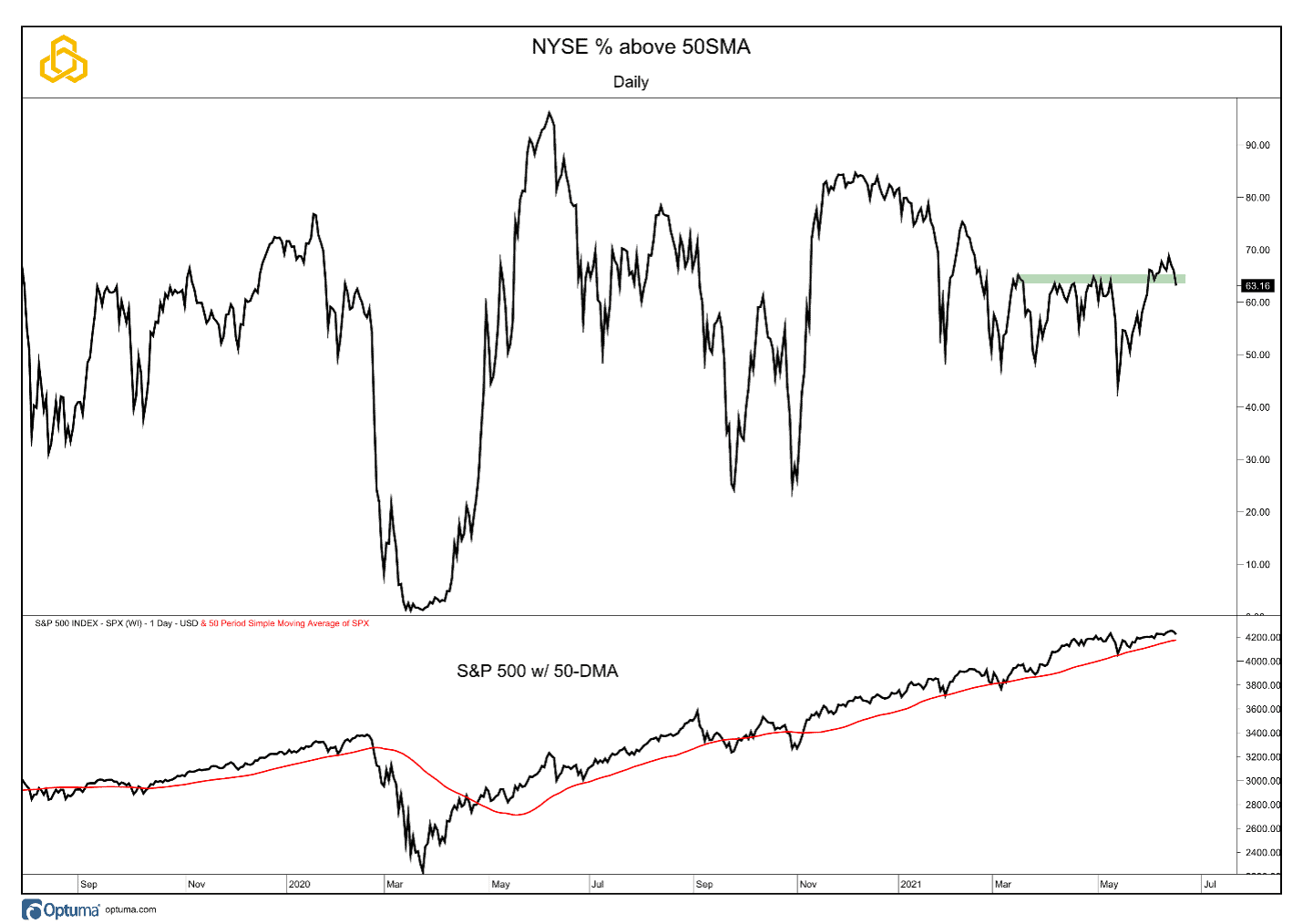
The percentage of NYSE issues trading above their respective 20-day moving averages has made a sharp turn to the downside, moving back below the declining trend line. At the same time, the S&P 500 closed just above its own 20-day moving average.

S&P 500 Breadth
Breadth for the S&P 500 has weakened further over the past week. The A/D Line remains in an uptrend but is rolling over from recent highs. The percentage of stocks in the index above their 200-day moving averages has pulled back from readings over 90%. The percentage above their 50-day moving averages has broken below the 60% level. The short-term metric, percentage above their 20-day moving averages, has sustained recent pressure as well. None of these metrics confirmed the recent highs for the index.
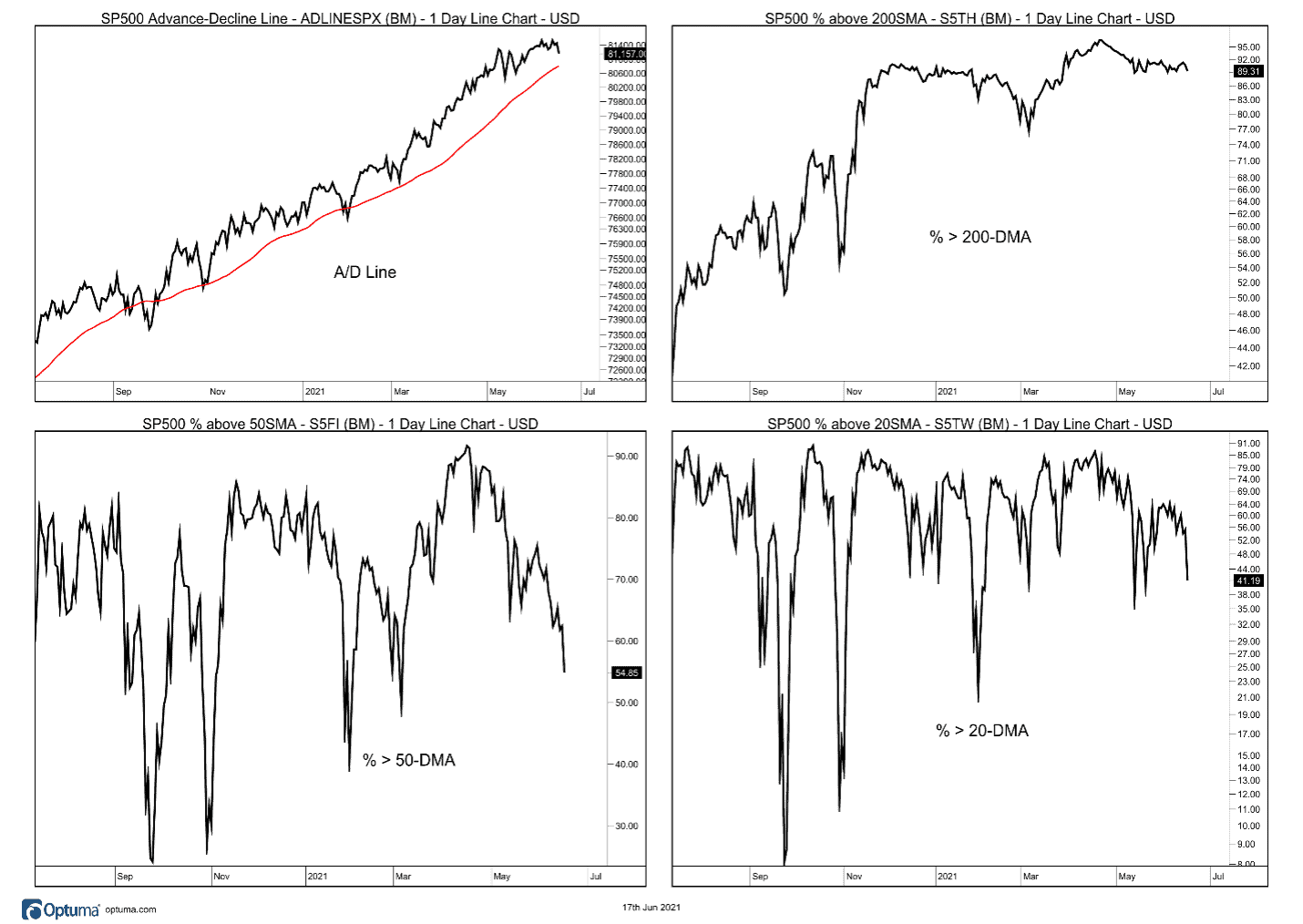
Small Cap Breadth
Small Cap breadth has been the most resilient over the past week. The A/D Line has stalled slightly but has not yet made a lower low as it remains above the 50-day moving average. The percentage of stocks above their respective 200-day moving averages is only down slightly on the week. The percentage above their 50-day moving averages remains above 60%, while the percentage above their 20-day moving averages is only slightly below that key level.
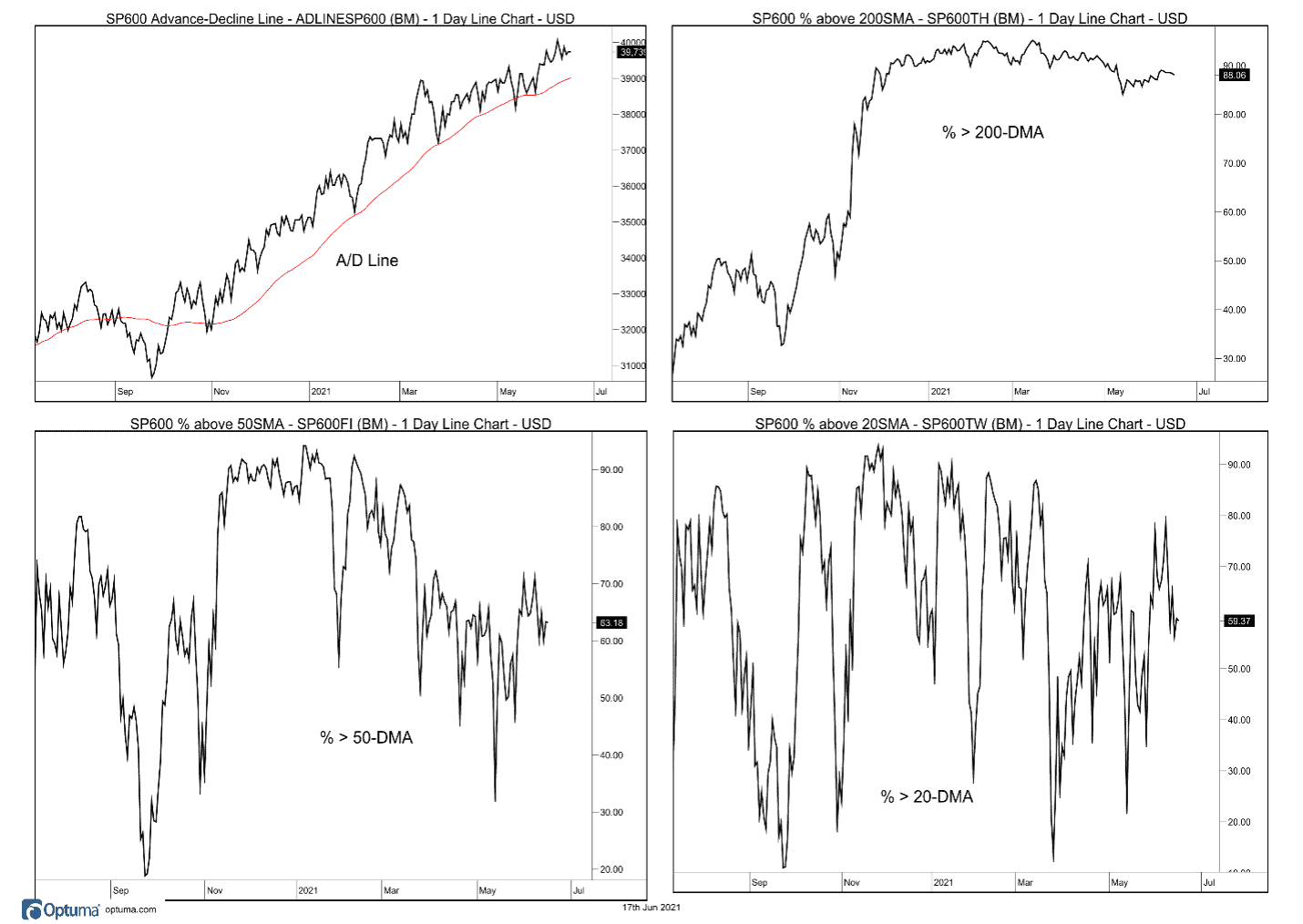
Take-Aways
Despite the S&P 500 trading near record levels, there are signs that breadth is weakening under the surface. We note that trend metrics did not confirm the recent high for the index. The increase in new lows on the NYSE has also caught our attention.
